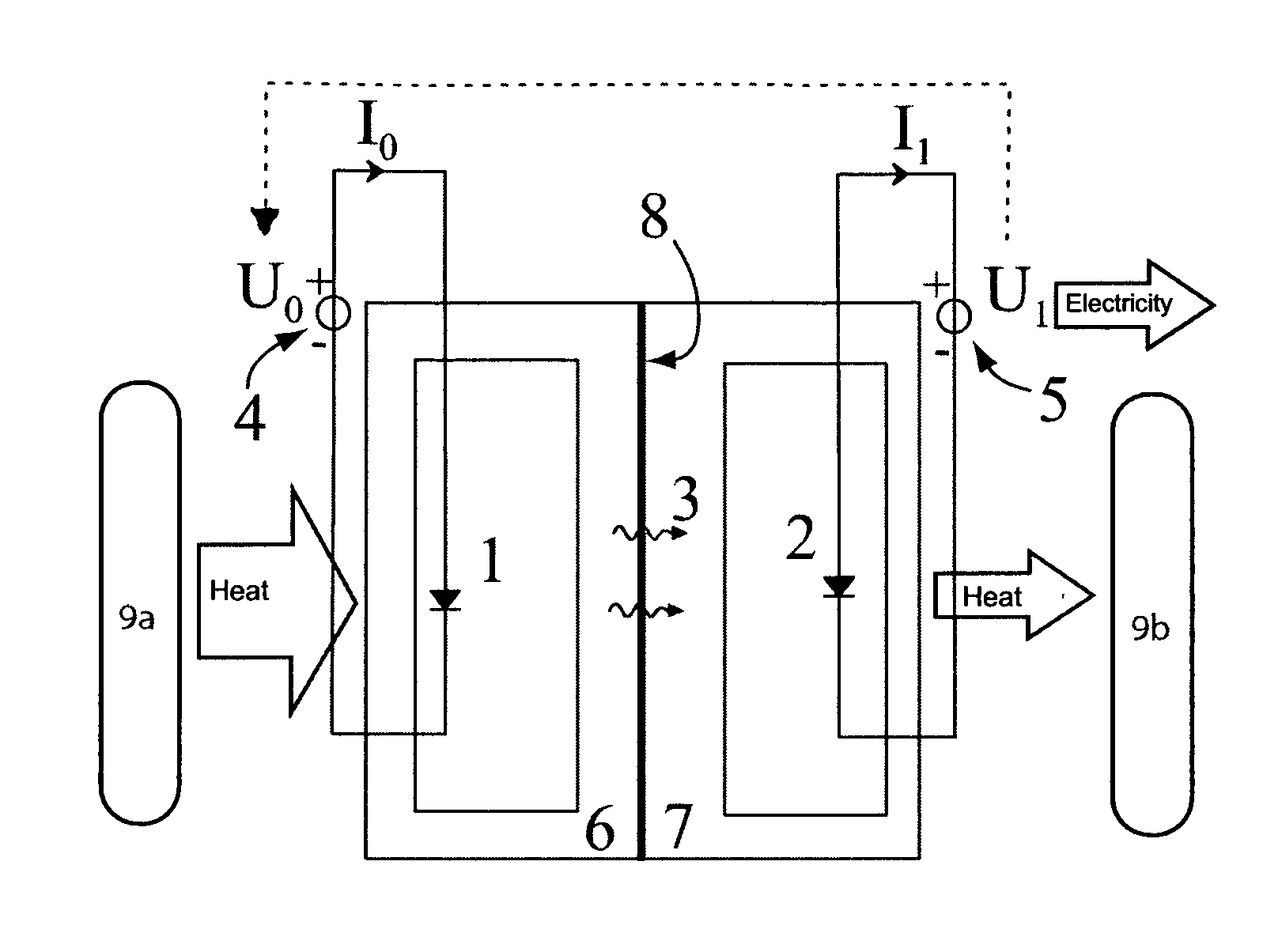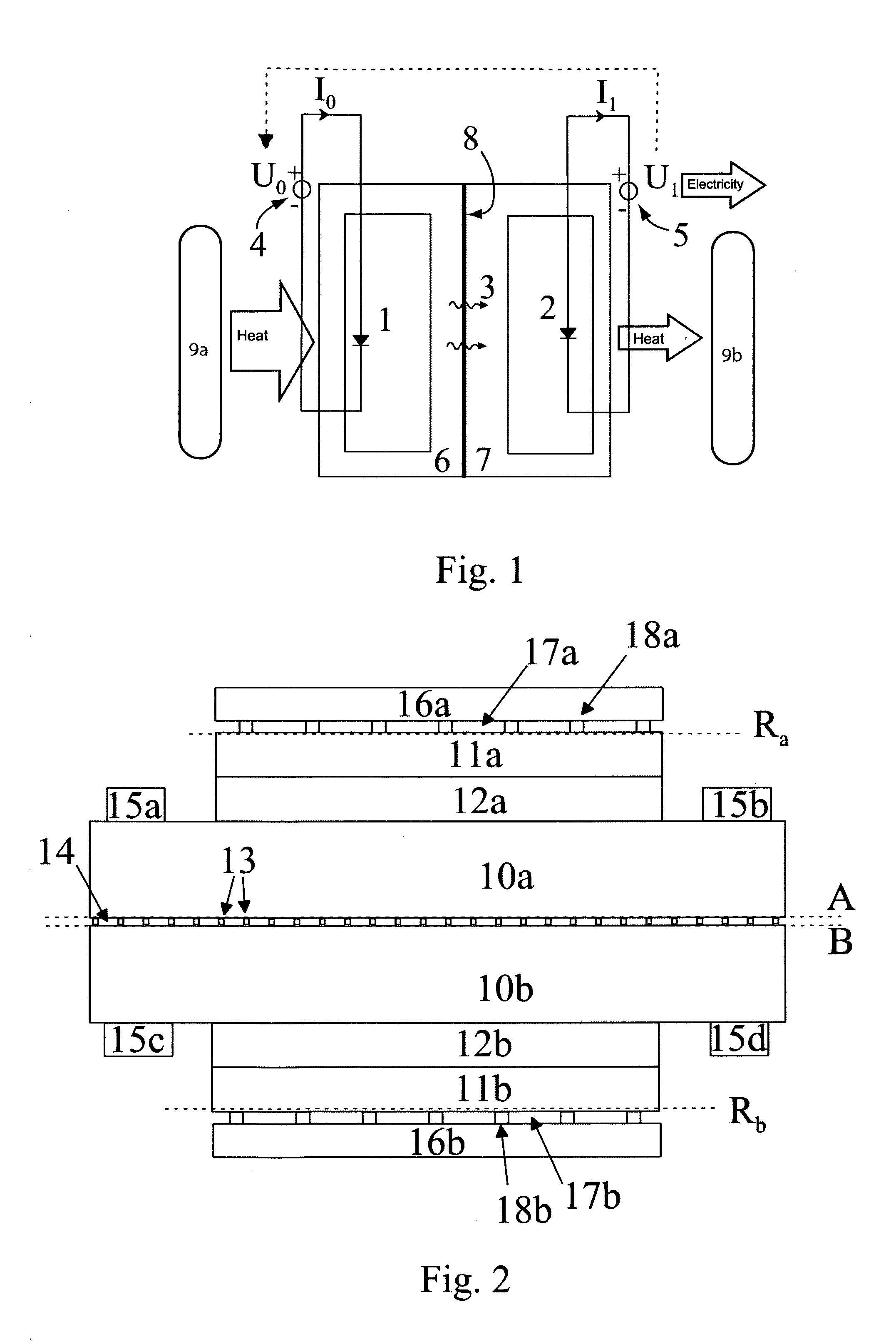Programmable gain amplifier with multi-range operation for use in body sensor interface applications
a gain amplifier and multi-range technology, applied in the operation mode of machines, pv power plants, lighting and heating apparatus, etc., can solve the problems of low efficiency in case of thermoelectric effect, large size, and need for very high temperature difference in case of mechanical turbines, so as to reduce heat transfer, reduce the size, and the effect of lack of moving parts
- Summary
- Abstract
- Description
- Claims
- Application Information
AI Technical Summary
Benefits of technology
Problems solved by technology
Method used
Image
Examples
Embodiment Construction
[0032]In the following examples of the operation principle and the structure of a thermophotonic generator using light are described according to certain embodiments of the invention. It should be noted that instead of light, the thermophotonic generator may transfer heat by using another form of electromagnetic radiation.
[0033]In FIG. 1 the element 1 emitting radiation emits radiation 3 by using an external energy source 4 and heat energy obtained from the hot heat reservoir 9a. Element 1 can include for example a light emitting diode that emits light by electroluminescence and the external energy source 4 can be a voltage source (or more generally an energy source) U0, that injects a current I0 for the light emitting diode through the electrical circuit of FIG. 1. The emitted radiation 3 is transferred to the element 2 absorbing radiation, where a part of the energy contained by the radiation is given to an external element 5 and a part is restored as heat that is released to the ...
PUM
 Login to View More
Login to View More Abstract
Description
Claims
Application Information
 Login to View More
Login to View More - Generate Ideas
- Intellectual Property
- Life Sciences
- Materials
- Tech Scout
- Unparalleled Data Quality
- Higher Quality Content
- 60% Fewer Hallucinations
Browse by: Latest US Patents, China's latest patents, Technical Efficacy Thesaurus, Application Domain, Technology Topic, Popular Technical Reports.
© 2025 PatSnap. All rights reserved.Legal|Privacy policy|Modern Slavery Act Transparency Statement|Sitemap|About US| Contact US: help@patsnap.com


